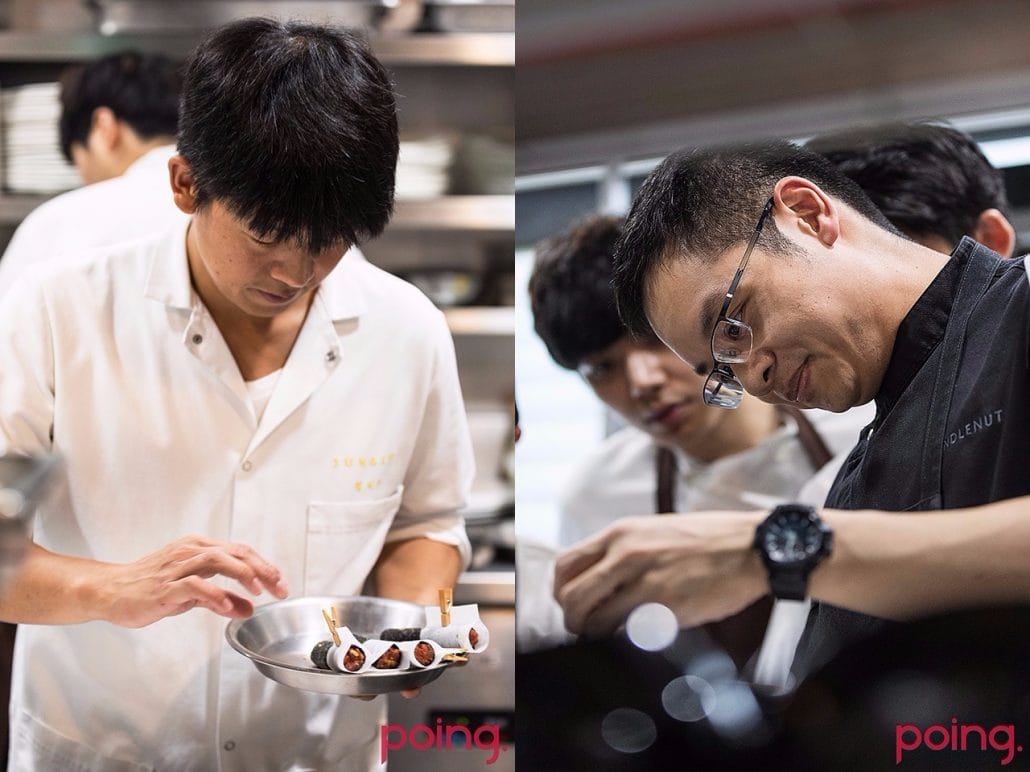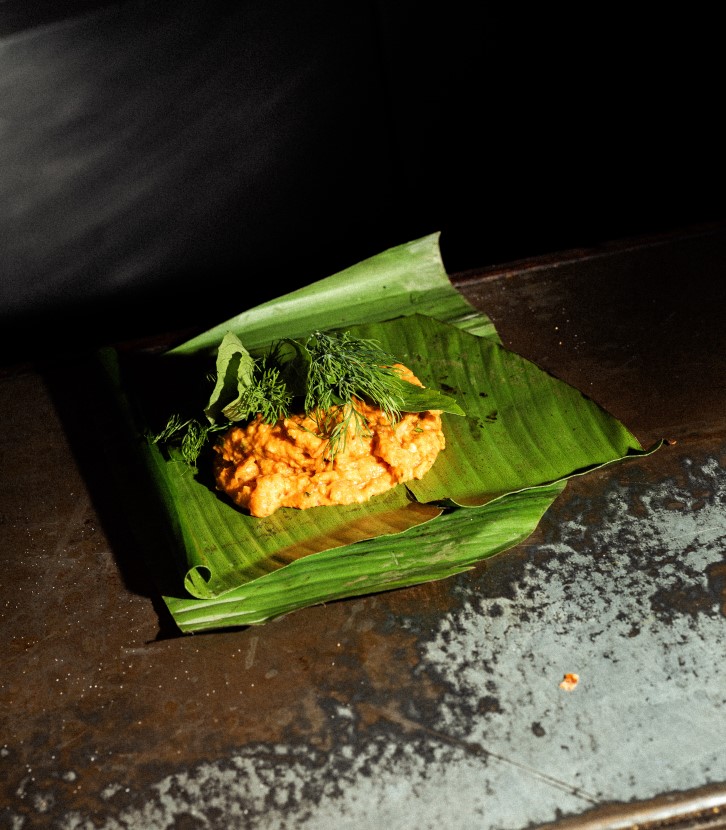Four hands events are a growing trend in the culinary world. The outcome of the collaborations–where chefs share a stove–ends up being more than the sum of its parts, in the sense that one plus one doesn’t equal two, but three. They are all about creating synergy, combining techniques, and looking for that common denominator – one that may not always be immediately apparent.
For chefs, a four hands collaboration is an opportunity to gain further insight into new culinary techniques, to share ideas and experiences, and to break down pre-conceptions and boundaries. For diners, the experience may be comparable to the thrill of going to a concert to watch two of their favorite musicians share the stage.
At first glance, it may look like Yim Jung-sik and Malcolm Lee don’t have much in common besides their culinary prowess. The former is one of the most influential chefs of modern Korean fine dining, with his eponymous restaurant ‘Jungsik’ in Seoul and its New York outpost earning one and two Michelin stars, respectively. The latter is responsible for putting the centuries-old traditions of his native Peranakan cuisine on the global culinary map with his one Michelin-starred ‘Candlenut’ in Singapore.

But dig deeper, and the two have much more in common than meets the eye. Both chefs are known for reinventing the classics of their culinary heritage, adding a modern spin to the old and the familiar with a good dose of inspiration from their personal journeys. But that alone would hardly set them apart from countless other chefs who are essentially doing the same thing. What makes Yim and Lee masters of their craft is their fierce reverence for tradition and their ability to convey it on a plate. The outcome is new and edgy, yet comforting and familiar at the same time. Their innovative spin doesn’t come across as gimmicky; rather, it makes authenticity relevant to this modern age.
So, why Korean cuisine? And why Peranakan? “It’s the food I grew up eating, the food I eat every day, and the food I know best,” says Yim. Lee echoes, “We both love our heritage and the flavors we grew up with. It means a lot to me that I am sharing the legacy of my culinary heritage with the younger generation.”
If you are wondering, Peranakan cuisine comes from the descendants of early Chinese migrants who settled in the Malay Archipelago and the Dutch East Indies (Penang, Malacca, Singapore and Indonesia) between the 15th and 17th centuries. Their cuisine combines Chinese, Malay and Indonesian flavors, which have distinct notes of tangy, aromatic, spicy and herbal, from the use of key ingredients such as coconut milk, galangal, tamarind juice, lemongrass, kaffir lime leaf and cincaluk – a powerfully salty and sour shrimp-based condiment.
The eight-course dinner, organized by the Michelin Guide and held at Jungsik Seoul, started with an assortment of amuse-bouches offering a medley of flavors from Korea and Singapore – the perfect prelude to what was to follow.

Yim’s whimsical interpretation of yuk-hwe or Korean-style beef tartare came first. Encased in a crispy cylindrical seaweed shell and served with a vibrant paprika sauce studded with julienned perilla leaves, the appetizer was crunchy and smooth, savory and tangy all at once.
Then came a duo of seafood courses – two of the most flavorful dishes of the evening. Chef Lee’s lobster curry was rich and creamy, spicy and warmly aromatic from the coconut milk, lemongrass, turmeric and galangal.
The curry was followed by Yim’s sea urchin rice, a signature dish at Jungsik: a mound of rice—dressed with fragrant seaweed puree and sesame oil–served with crispy toasted buckwheat, kimchi, a few slivers of crunchy iceberg lettuce, and a generous helping of the sweetest, creamiest sea urchin.

The main course – Lee’s 48-hour charcoal grilled beef short ribs – proved to be another show stopper. The buttery, smoky cut of beef was topped with a smear of salty ikan bilis paste, green mango sambal, torch ginger buds, tangy pickled root vegetable, and a delicately crispy deep-fried morning glory leaf.

The most exotic dish of the evening was the Buah Keluak ice-cream, a stunning dessert by Lee. Buah Keluak is a poisonous fruit whose seeds are painstakingly detoxified, prepared, and eaten as a Peranakan delicacy. The processed nut paste boasts a rich, earthy, bitter and nutty flavor reminiscent of a good-quality single origin dark chocolate. The signature dessert at Candlenut came with a scoop of earthy Buah Keluak ice-cream blended Valrhona chocolate, served on a bed of salted caramel, chocolate crumble and chili flakes. The entire dish was finished off with warm milk chocolate espuma.

Asked to describe the concept of the four-hand menu, Lee said, “I believe the dishes I’ve picked for my part really blends in with the style of food served at Jungsik while showcasing our own flavors at the same time – for instance, the distinct kick from chilies and the sour notes from the limes and vinegars. The menu also incorporates a good dose of products Koreans love such as beef and seafood. Consider it a preview of what our style of food is, what Koreans can expect when they visit Singapore.”
Published 2017.08.19






















